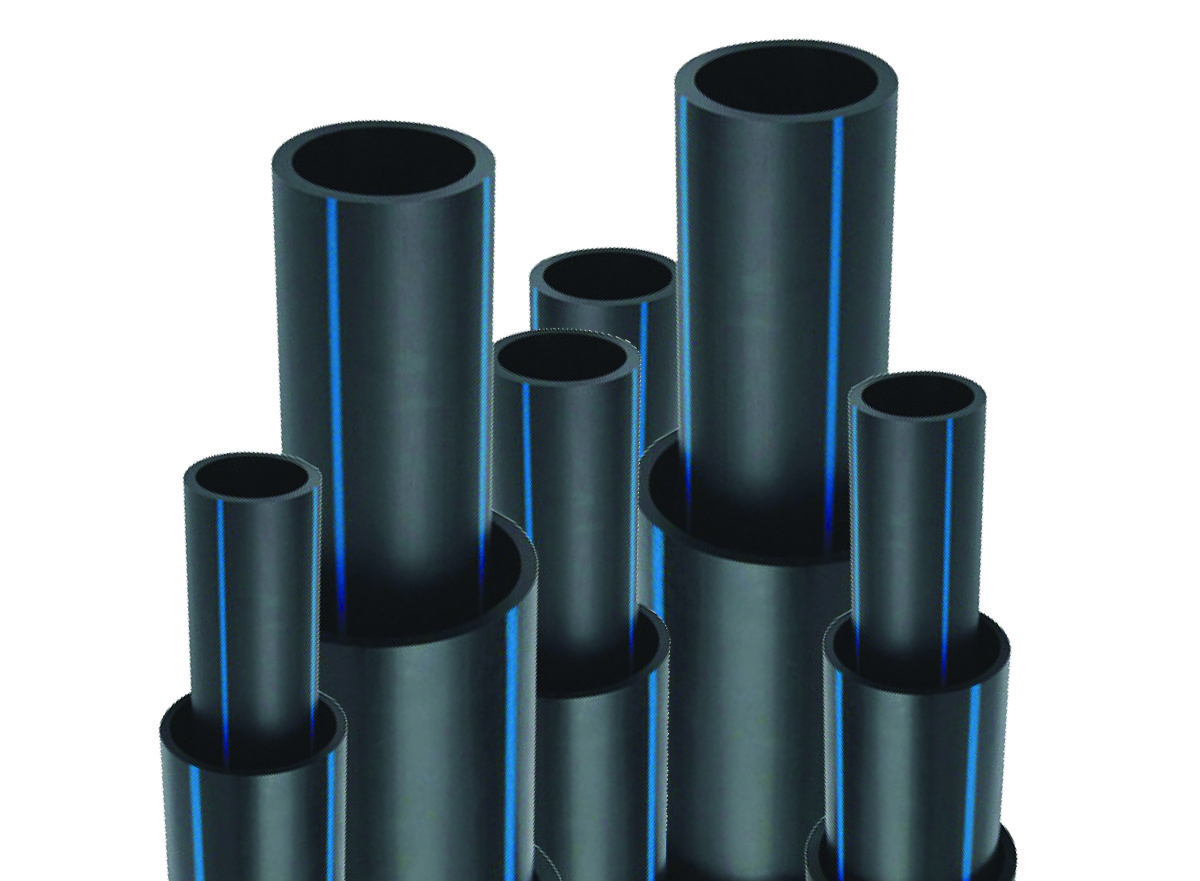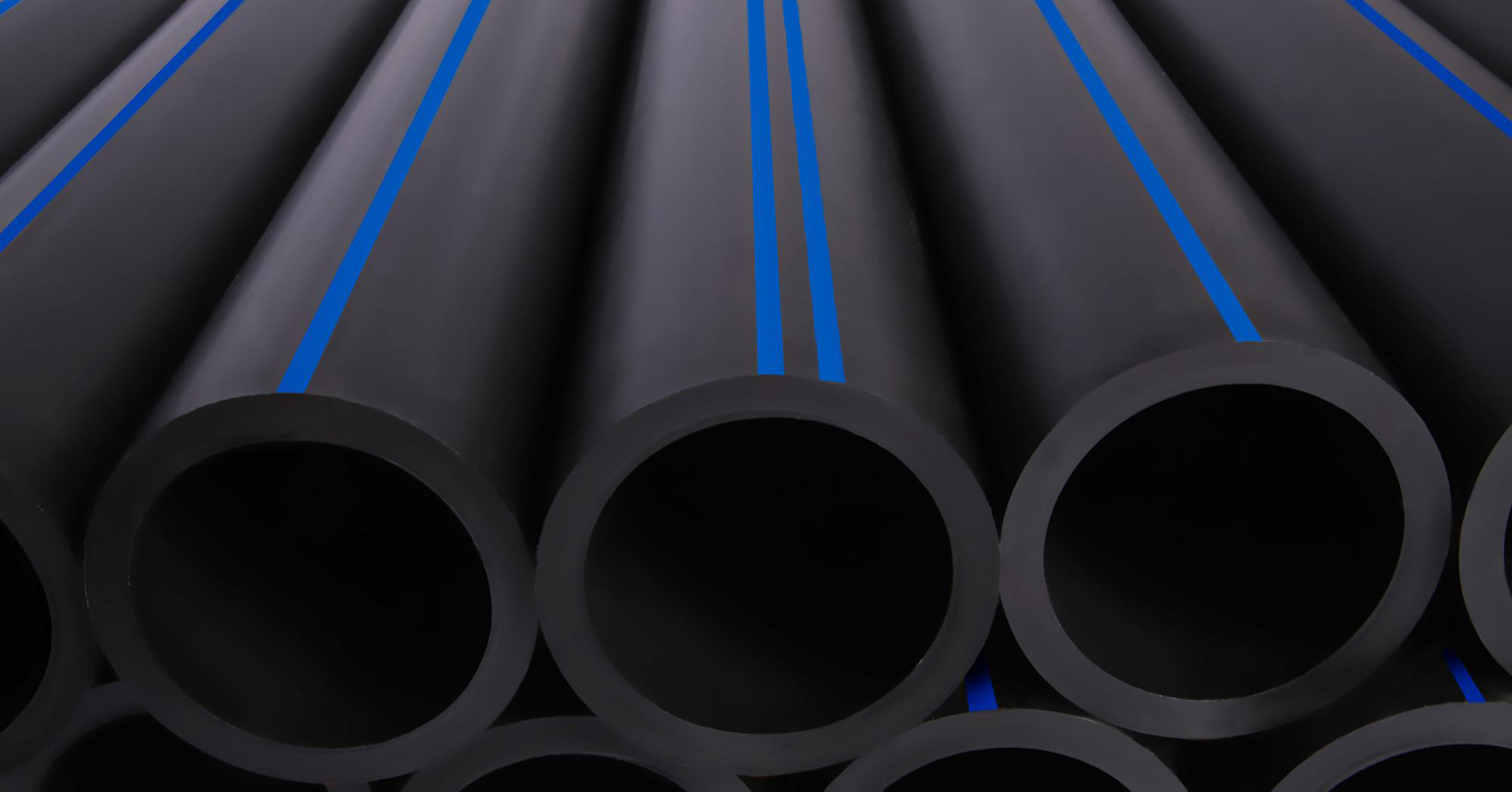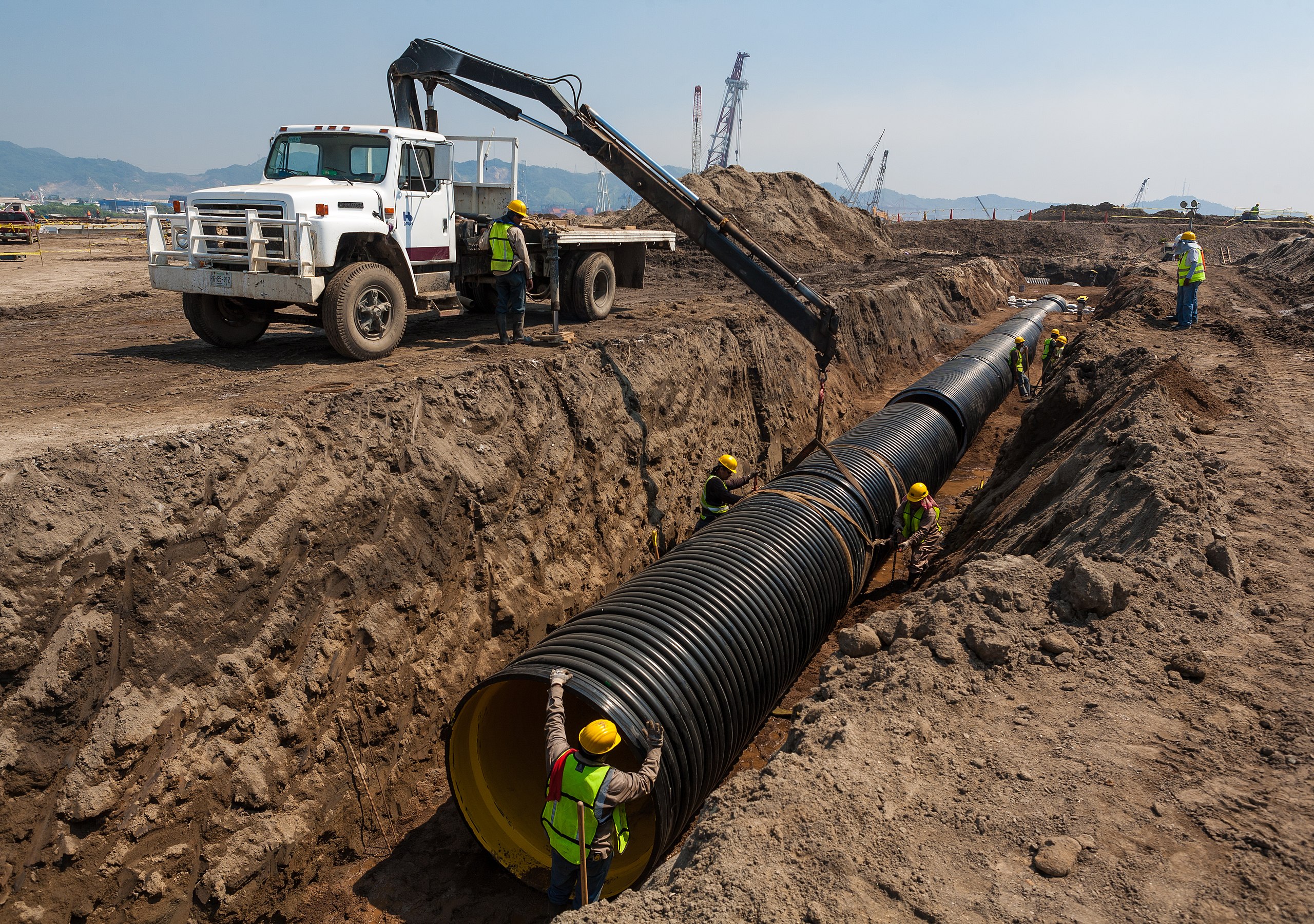Check Out the Manufacturing Refine Behind High-Quality HDPE Pipe and Its Applications
The manufacturing procedure of top notch HDPE pipes is complex and methodical. It begins with the option of basic materials that boost performance. Following this, ethylene undergoes polymerization to form resin, which is after that shaped through extrusion. Quality assurance is vital, making certain that the final product fulfills rigid requirements. However, the journey of HDPE pipes does not finish with production. Their applications across different markets disclose a wider relevance worth taking a look at.
Understanding HDPE: Characteristics and Advantages

High-density polyethylene (HDPE) is a flexible polycarbonate known for its sturdiness and resistance to numerous ecological elements. This material exhibits superb tensile strength, making it suitable for requiring applications. Its low-density framework contributes to a light-weight item, helping with ease of taking care of and installment. HDPE also showcases exceptional resistance to chemicals, which minimizes deterioration when revealed to rough substances.
The material's reduced dampness absorption even more improves its long life, making it suitable for usage in pipelines and storage space tanks. Additionally, HDPE is resistant to ultraviolet (UV) radiation, making sure that items preserve their honesty also when subjected to sunshine. Its adaptability allows for the creation of detailed forms without jeopardizing strength. The environmentally friendly nature of HDPE, often derived from recycled materials, includes to its charm, promoting sustainable practices in manufacturing. In general, these residential properties and advantages make HDPE a recommended option for various industrial and consumer applications.
Basic Material Choice for HDPE Production
The option of basic materials for HDPE manufacturing is important to verify the end product fulfills the wanted specifications and high quality criteria. High-density polyethylene (HDPE) is mainly produced from polymerized ethylene, stemmed from fossil fuels such as natural gas or unrefined oil. The top quality of these feedstocks considerably influences the mechanical and thermal properties of the final HDPE.
Ingredients additionally play a considerable duty in enhancing HDPE's performance, including anti-oxidants, UV stabilizers, and colorants, which enhance toughness and resistance to ecological factors. The option procedure need to think about not only the chemical structure of the raw products however likewise their processing qualities to assure efficient manufacturing.
The sourcing of raw products need to prioritize sustainability and compliance with environmental policies, as accountable techniques are crucial in today's market. Eventually, mindful basic material option lays the foundation for producing high-grade HDPE pipelines appropriate for varied applications.
The Extrusion Refine: Shaping HDPE Pipeline
The extrusion process plays an essential duty in forming HDPE pipelines, starting with meticulous material preparation techniques that ensure ideal flow and uniformity. Equally essential is the design of the die, which directly influences the final dimensions and surface high quality of the pipe. With each other, these factors contribute substantially to the effectiveness and top quality of HDPE pipe manufacturing.
Material Prep Work Methods
Efficient production of HDPE pipes starts with meticulous product preparation techniques, particularly the extrusion procedure. During this stage, high-density polyethylene resin is very first dried to remove wetness, making certain ideal circulation attributes. The resin is then fed right into the extruder, where it undertakes home heating and melting, transforming into a viscous state. This heating procedure is meticulously controlled to keep the product's integrity and performance. The molten HDPE is compelled via a die, shaping it into a continuous pipe form. Proper temperature level management during extrusion is important, as it straight influences the product's properties and the last product top quality. Once formed, the HDPE pipeline is cooled and cut to defined lengths, all set for subsequent processing and applications.
Die Design Relevance
Accuracy in die design plays a crucial function in the extrusion process of HDPE pipes. The die functions as the last shaping device, straight affecting the pipeline's dimensions, wall density, and surface area finish. A well-designed die assurances consistent product circulation, lowering flaws such as irregularities and vulnerable points. The geometry of the die have to be maximized to accommodate the specific homes of HDPE, including its viscosity and thermal behavior during extrusion. Additionally, the cooling price of the material as it passes through the die can significantly affect the pipe's architectural integrity. Consequently, spending in sophisticated die technology is vital for producers aiming to generate high-quality HDPE pipes that meet sector standards and customer assumptions.
Quality Control Measures in HDPE Production
Although different elements influence the high quality of HDPE pipeline production, reliable quality assurance steps are essential to guarantee consistency and reliability in the final product. Secret quality control practices consist of extensive product inspection, confirming that the raw polyethylene fulfills recognized requirements for pureness and density. During the extrusion procedure, criteria such as temperature level, stress, and cooling time are very closely monitored to preserve dimensional accuracy and architectural integrity
Additionally, post-production testing is crucial; makers usually carry out hydrostatic tests to assess the pipe's stamina and resistance to pressure. Visual inspections for surface area flaws further boost quality control. Accreditation from relevant requirements organizations, like ASTM or ISO, gives an added layer of integrity. By implementing these thorough high quality control actions, producers can reduce defects, boost efficiency, and guarantee that the HDPE pipes fulfill the certain needs of numerous applications, ultimately resulting in client contentment and count on in the product.
Applications of HDPE Pipeline Across Industries
HDPE pipes are used across numerous industries because of their longevity and adaptability. In water circulation systems, they assure efficient shipment, while in wastewater administration, they provide dependable options for waste transport. Furthermore, farming watering networks take advantage of HDPE's resistance to corrosion and adaptability, making it an optimal choice for modern-day farming practices.

Water Circulation Equipments
A considerable variety of markets count on high-density polyethylene (HDPE) pipelines for effective water distribution systems. Understood for their durability and resistance to deterioration, HDPE pipelines are extensively utilized in municipal water supply networks, farming watering, and commercial applications. Their light-weight nature helps with simple handling and setup, reducing labor costs and time. Furthermore, HDPE pipelines can fit different stress degrees, making them ideal for both reduced and high-pressure systems. Pipe Manufacturing Midland TX. The flexibility of the material permits for smooth combination right into existing framework, lessening the demand for comprehensive excavation. Furthermore, HDPE's resistance to chemical seeping warranties that the water supplied continues more info to be risk-free and clean, making it a suitable option for maintaining the top quality of drinkable water across various industries
Wastewater Administration Solutions
Effective water circulation systems also lead the means for cutting-edge wastewater monitoring solutions, where high-density polyethylene (HDPE) pipes play a considerable duty. Popular for their longevity and resistance to rust, HDPE pipes are optimal for moving wastewater in different setups. Their versatility enables very easy installment in intricate environments, minimizing the requirement for considerable excavation. In addition, HDPE's smooth interior surface minimizes rubbing, improving flow prices and performance. These pipes are additionally resistant to chemical leaching, ensuring that pollutants do not compromise the surrounding atmosphere. Industries, municipalities, and therapy facilities significantly rely upon HDPE pipelines for their integrity and longevity, making them a favored option for contemporary wastewater administration systems. This versatility underscores the essential relevance of HDPE pipelines across countless applications.
Agricultural Irrigation Networks
Agricultural irrigation networks benefit significantly from making use of high-density polyethylene (HDPE) pipes, which give efficient and trustworthy water delivery to crops. HDPE pipes are lightweight, making them simple to carry and install, while their flexibility permits for various setups in varied surfaces. These pipes demonstrate outstanding resistance to deterioration, chemicals, and UV radiation, ensuring toughness in extreme farming environments. Furthermore, their smooth indoor surface area decreases rubbing loss, enhancing water flow and minimizing power prices associated with pumping. The long life of HDPE pipes, usually exceeding half a century, adds to reduce maintenance and substitute expenses. Farmers significantly count on HDPE pipelines to improve watering effectiveness and advertise sustainable agricultural methods, ultimately leading to improved plant yields and source conservation.

Future Patterns in HDPE Pipe Innovation
As the need for lasting and effective framework expands, improvements in HDPE pipe technology are positioned to transform various markets. Emerging fads include the integration of clever technologies, such as sensing units and IoT capacities, which assist in real-time tracking of pipe problems, decreasing upkeep expenses and preventing leaks. Additionally, the development of sophisticated manufacturing techniques, such as 3D printing, is enabling the production of complex, tailored pipeline styles that accommodate details task needs.
The focus on recycling and circular economic climate methods is driving the technology of HDPE pipelines made from recycled products, enhancing sustainability. Improved jointing methods, such as electro-fusion and mechanical installations, are likewise boosting setup efficiency and dependability. The growing emphasis on ecological guidelines is pushing manufacturers to embrace greener production processes, making sure that HDPE pipelines not just fulfill industry criteria however additionally cultivate an even more sustainable future for facilities growth.
Often Asked Inquiries
How Does HDPE Compare to Other Plastic Materials?
HDPE outshines lots of various other plastic materials relating to resilience, chemical resistance, and adaptability. Its low thickness and high tensile stamina make it excellent for numerous applications, often going beyond options in both performance and long life.
What Are the Environmental Effects of HDPE Production?
The ecological impacts of HDPE manufacturing consist of greenhouse gas emissions, energy consumption, and prospective pollution from manufacturing processes. Furthermore, improper disposal can cause soil and water contamination, raising worries about long-term ecological results.
Can HDPE Pipeline Be Recycled?
Yes, HDPE pipelines can be reused. Numerous centers accept utilized HDPE for processing, transforming it right into new items. This reusing contributes to sustainability initiatives, decreasing plastic waste while conserving resources and energy in the production cycle.
What Is the Life-span of HDPE Water Lines?

Just How Do Temperature Variations Affect HDPE Pipeline Performance?
Temperature variants significantly affect HDPE pipe performance, influencing flexibility and toughness. Heats can cause softening, while reduced temperatures may cause brittleness, eventually affecting the pipeline's longevity and viability for various applications in varied settings.